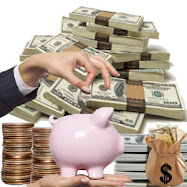We are pleased to announce the launch of Public Far-East Alpha-30 Fund.

PFA30F |
Main Features | To achieve capital appreciation over the medium- to long-term period by investing in up to a maximum of 30 stocks listed in domestic and regional markets. |
Asset Allocation | % of NAV Equity = 75% to 98% (Up to 98% of its NAV in selected Far-East markets which include South Korea, China, Taiwan, Japan, Hong Kong, Philippines, Indonesia, Singapore, Thailand, India, Australia and other permitted markets.) |
Target Market | Investor with aggressive risk-reward temperament and can withstand extended period of market high and low in pursuit of capital growth. |
Offer Period | 6 April 2010 to 26 April 2010 |
Issue Price | RM0.2500 per unit |
Service Charge | During offer period: Investment amount per transaction Special Service Charge Below RM5,000 5.50% RM5,000 to RM9,999 5.25% RM10,000 and above 5.00% After offer period : Up to 5.50% |
DDI | Service Charge rate of 5.25% during offer period. (Terms and conditions applied) |
Switching during offer period | Switching Transaction involving PFA30F are not allowed EXCEPT from low load units |
Approved for EPF Investment | NO |
Growth Potential of the fund and market update
1. There is not a single doubt on Greater China’s growth potential, GDP growth rate for the past 10 years was in the region of 8-12%, and is most likely to continue growing in that range for the next 5 to 10 years. 2009 was a year where most countries were registering –ve GDP growth, but China GDP grew at 9%, thanks to 4 trillion yuan stimulus package!
China GDP growth rate (%) (Source: index mundi)
Country | IMF projection of 2010 GDP growth (%) |
United States | 2.7 |
United Kingdom | 1.3 |
Japan | 1.8 |
China | 9.6 |
India | 7.7 |
Singapore | 6.0 |
Indonesia | 5.6 |
Thailand | 4.4 |
Philippines | 3.8 |
Taiwan | 5.6 |
Hong Kong | 4.4 |
South Korea | 4.7 |
Australia | 3.1 |
2. 2010 is a recovery year for developing and developed economies, growth in regional markets should remain underpinned in 2010 by accommodative real interest rates and resilient liquidity conditions as regional exports rebounds. Developed economies is expected to register moderate growth in 2010 amidst continued deleveraging households and unemployment rate eases in US from 10.4% in February to 9.6% in March 2010, there were 162,000 jobs created in March 2010, mainly in the service sector. Growth of regional economies is expected to outpace developed economies in 2010. As such, regional markets are expected to outperform over medium to long term due to their reasonable valuations, high savings rate, brighter economic growth prospects.
3. China’s exports climbed 17.7% year-on-year in December 2009 mainly driven by surged in semiconductor sales. It was the first increase in 14 months. Imports also increased 55.9% year-on-year in December. In 2009, China’s exports fell 16% and imports dropped 11.2% as compared to 2008. Trade surplus dropped to $196.1 billion. A comeback in exports shows that a global recovery is gaining momentum.
4. The recent hike in required reserve ratio for big banks has caused to market to consolidate. The tightening in bank lending was necessary to curb property and equity speculation as well as to manage inflation expectations. With the move, China loan growth has slowed from 29% January to 25% in February.
5. The Chinese government also announced a few policies to control an overheating property market, it aims to lower the risk of building up an asset bubble.
a. The government will also enhance market supervision as a way to stabilise the market and prevent the house prices in some cities to move up too fast.
b. The government targets to increase supply of ordinary housing, support self-use homes and curb speculation.
c. The government also imposes a sales tax on homes sold within 5 years of their purchase, increasing the time period from 2 years.
6. In terms of valuation, Chinese companies listed in Hong Kong are trading at an attractive level, we continue to like China based on its strong estimated earnings growth and attractive evaluation of the Chinese companies. As of 2nd April, China H shares are trading at prospective P/E ratio of 11.20, which is below its average of 13.
Source: Public Mutual Market Wrap 2nd April
We continue to favor Asia market, especially the Far-East market because of its strong recovery, resilient liquidity and attractive evaluation of Chinese companies.
















